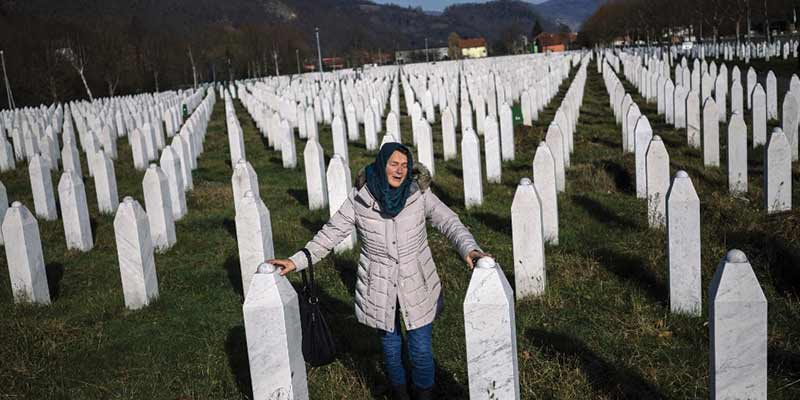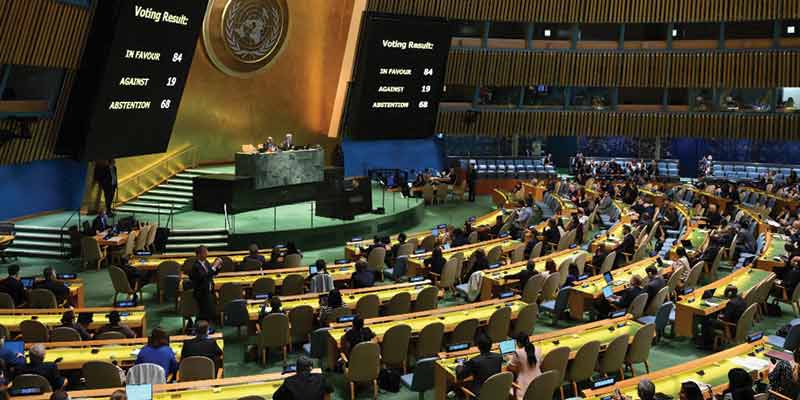- World
- May 24
Explainer - Srebrenica genocide in 1995
• The United Nations General Assembly approved a resolution declaring July 11 as the International Day of Reflection and Commemoration of the 1995 Genocide in Srebrenica.
• The resolution, initiated by Germany and Rwanda and the cross-regional core group that included the United States, was approved by a narrow margin of 84 votes in the 193-member General Assembly, with 19 votes against and 68 abstentions.
• It was a reflection of concerns among many countries about the impact of the vote on reconciliation efforts in deeply divided Bosnia.
• Serbia and Bosnian Serbs, who deny that the massacre constituted genocide, declared the vote a failure, saying that more countries did not vote in favor of the resolution than for it.
• They accused the authors of the resolution of branding Serbia as a “genocidal nation” although it was amended to add that the crime of genocide is individualised and cannot be attributed to any specific group.
The Dissolution of Yugoslavia
• With the end of the Cold War, the Socialist Federal Republic of Yugoslavia (SFRY) went through a rapid process of disintegration.
• Following referendums in their respective communities, both Slovenia and Croatia declared their independence on June 25, 1991.
• Serbia, led by nationalist Slobodan Milosevic, refused to accept the dissolution of Yugoslavia (which would divide the Serb people into 4 different republics: Serbia, Montenegro, Bosnia-Herzegovina, and Croatia) and violent conflict erupted in the region.
• In 1991 and 1992, fighting broke out between pro-independence and pro-Serbian forces throughout the region.
• The Serb-controlled Yugoslav National Army (YNA) moved towards Slovenia and fighting erupted on June 27, 1991.
• The conflict, generally known as the Ten-Day War, formally ended with the Brioni Agreement, negotiated under the auspices of the European Community, and Slovenia and Croatia subsequently agreed to a three-month moratorium on their independence.
• While the military confrontation with Slovenia was short lived and the YNA withdrew from its territory, the conflict with Croatia escalated. Fighting intensified following the July 1991 invasion by YNA forces and the termination of the conflict with Slovenia left Yugoslav forces able to focus on the military confrontation with Croatia. Other parts of Yugoslavia were also seeking independence.
• Croatia and Slovenia were internationally recognised in January 1992, with Bosnia’s independence recognised soon thereafter.
• The three countries joined the United Nations on May 22, 1992.
• Serbia and Montenegro formed a new Federal Republic of Yugoslavia as a successor state to old Yugoslavia, but the international community did not recognise its successor claim.
• The worst of the fighting occurred in Bosnia and Herzegovina. Bosnia, located in the heart of the former Yugoslavia, is a historically multi-ethnic region, home to Muslims, Croats, and Serbs. As Milosevic’s Serb nationalist ideology spread, Bosnian Serbs under the leadership of Radovan Karadzic clashed violently with the rest of the Bosnian population and the Muslim-dominated Bosnian government.
• The Federal Republic of Yugoslavia was admitted as a Member of the United Nations by General Assembly resolution on November 1, 2000.
• On February 4, 2003, following the adoption and promulgation of the Constitutional Charter of Serbia and Montenegro by the Assembly of the Federal Republic of Yugoslavia, the official name of ‘Federal Republic of Yugoslavia’ was changed to Serbia and Montenegro.
• Montenegro held a referendum on May 21, 2006 and declared itself independent from Serbia on June 3.
Massacre in Srebrenica
• The massacre in Srebrenica marked one of the darkest chapters of the war that erupted after the breakup of former Yugoslavia.
• In July 1995, the Bosnian Serb army overran Srebrenica, which was previously declared a safe area by the Security Council, and brutally murdered thousands of men and teenagers there.
• A small and lightly armed unit of Dutch peacekeepers under the UN flag were unable to resist the Bosnian Serb force.
• Bosnian Serb forces commanded by General Ratko Mladic separated men and boys from women and executed them. Their remains were found years later in mass graves in eastern Bosnia, though some still do not know where their relatives died.
• The genocide claimed the lives of at least 8,372 people, mostly Muslim men and boys, and led to the displacement of over 20,000 women and children who were forcibly expelled from their homes.
• The Srebrenica killings were a bloody climax of Bosnia’s 1992-95 war.
• Both Serbia and Bosnian Serbs have denied that genocide happened in Srebrenica.
• Mladic and his political chief Radovan Karadzic were jailed for life for war crimes, including genocide, while nearly 50 Bosnian Serbs were also convicted.
• The brutal killings of Bosnian Muslims in Srebrenica by the army of Republika Srpska was recognised as an act of genocide by the International Court of Justice (ICJ) as well as the International Criminal Tribunal for the former Yugoslavia (ICTY).
Manorama Yearbook app is now available on Google Play Store and iOS App Store


